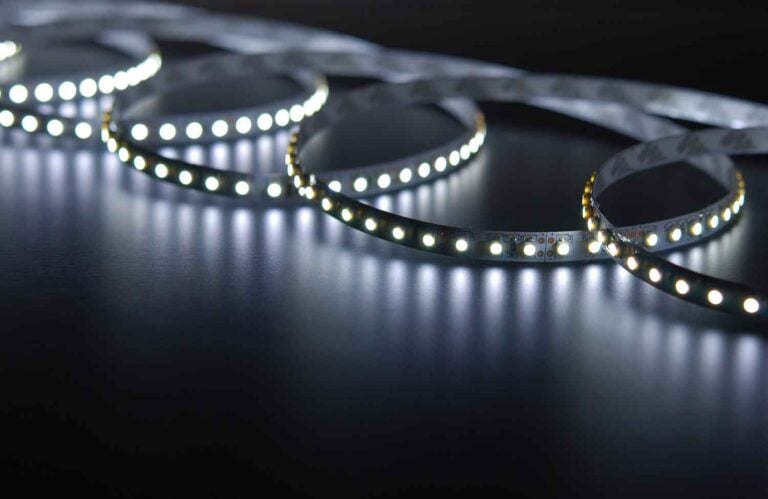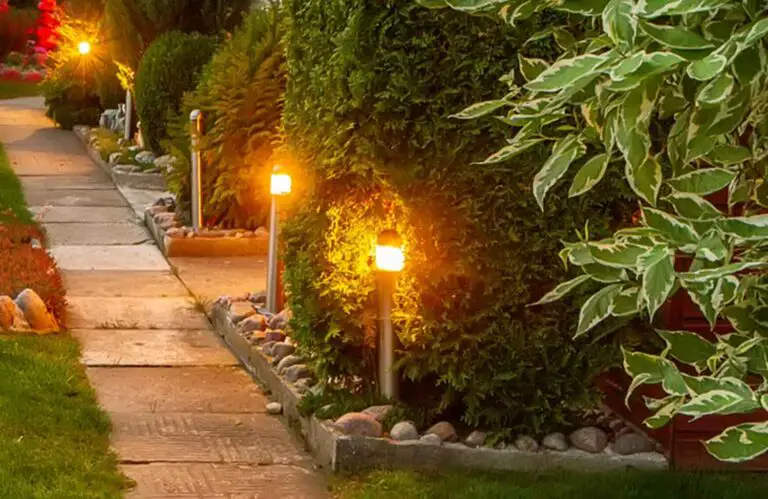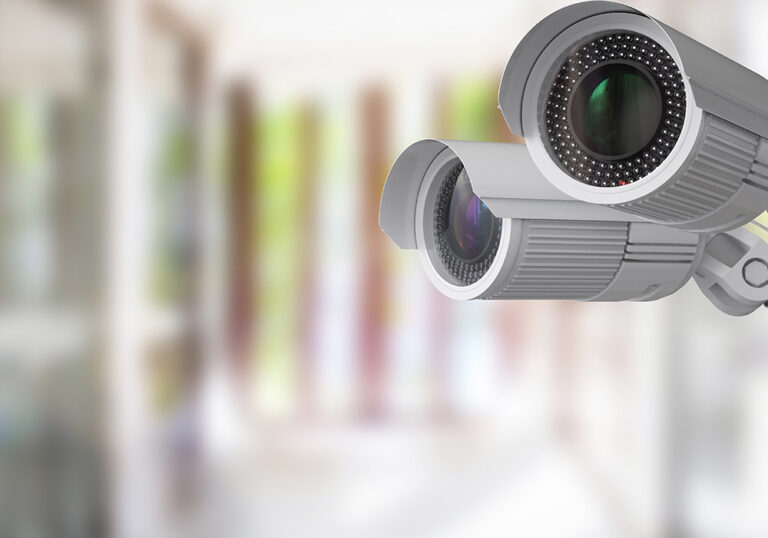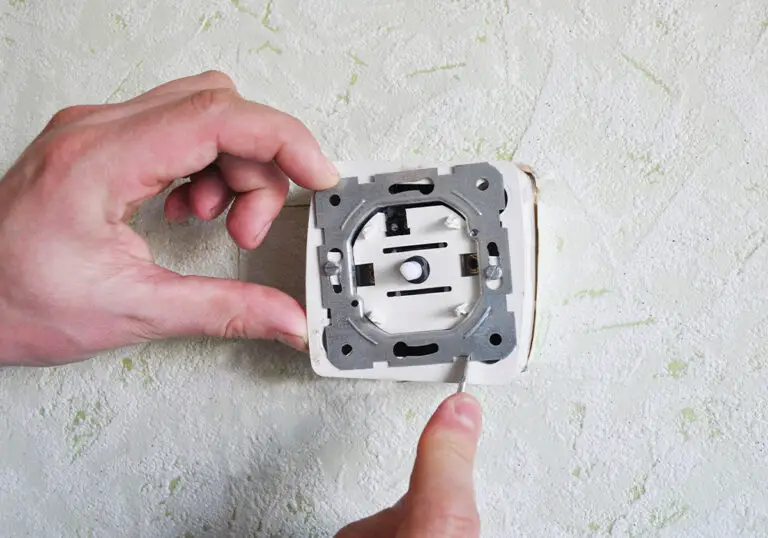How Much Electricity Do LED Lights Use? Comparing Usage and Efficiency
LED lights have gained significant popularity in recent years, thanks to their energy efficiency and durability. These lights use a technology called Light Emitting Diodes, which allows them to consume less electricity compared to traditional incandescent and CFL bulbs. Households and businesses alike are switching to LED lighting as a means to save on energy consumption and reduce their carbon footprint.
When it comes to understanding exactly how much electricity LED lights use, there are various factors that come into play. The wattage, frequency of use, and other contextual elements determine the energy consumption of a particular LED light. Furthermore, comparing LED lights to other light sources can paint a clearer picture of why they are becoming a preferred choice in the lighting market.
Key Takeaways
- LED lights are more energy-efficient than traditional incandescent and CFL bulbs
- Various factors such as wattage and frequency of use influence LED energy consumption
- Comparing LED lights to other sources highlights their advantages in saving electricity
Understanding LED Lights
LED lights, or Light Emitting Diodes, are energy-efficient lighting solutions that have gained popularity in recent years due to their many advantages over traditional incandescent and fluorescent lights. As you explore the world of LED lighting, it is essential to understand their basic principles and how they consume electricity.
Firstly, LED lights emit light when a current passes through a semiconductor, stimulating the release of photons. This process, known as electroluminescence, is far more efficient than incandescent lighting, where most of the energy is wasted as heat. Comparatively, LEDs convert a significantly higher percentage of electricity into light, meaning they use less energy to produce the same amount of brightness.
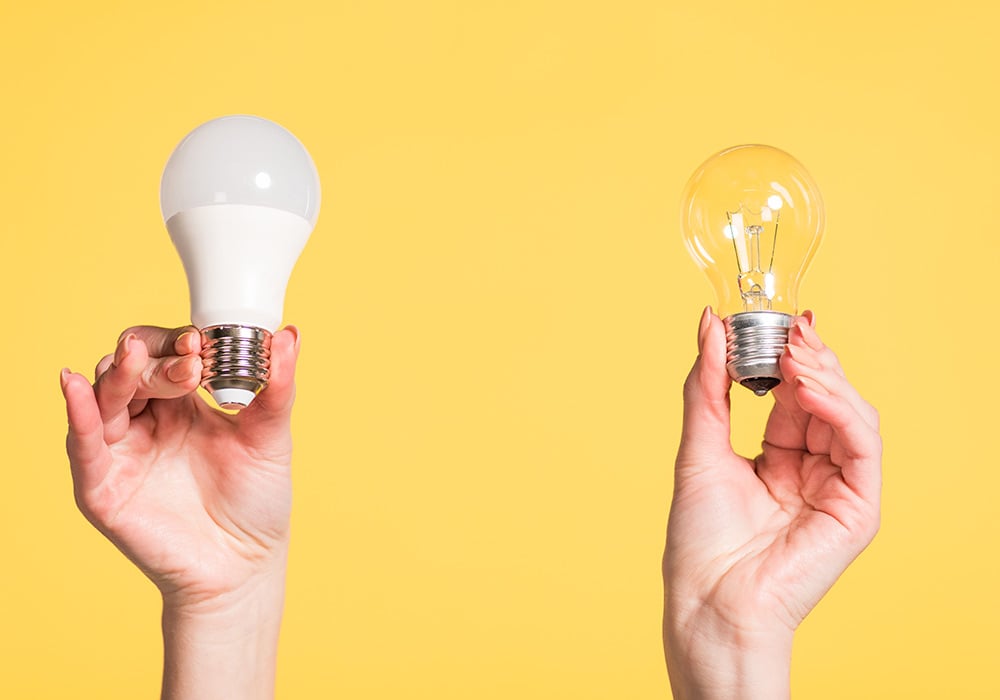
Next, considering energy consumption, you will often find LED lights measured in watts, which represent the amount of power used. An important aspect to remember is that LED lights provide more lumens, which is the unit of measurement for light intensity, per watt compared to conventional lighting sources. For instance, a 10-watt LED bulb can produce a similar light output as a 60-watt incandescent bulb. Therefore, you can enjoy brighter lighting with less energy consumed.
In addition, the lifespan of LED lights is considerably longer than that of incandescent and fluorescent lights. This means you’ll spend less time and money on frequent replacements. LEDs can last up to 25,000 hours or even more, depending on the quality and usage. Their durability not only reduces your overall maintenance costs but also contributes to a lower environmental impact.
To summarise, LED lights are energy-efficient lighting options that consume less electricity while providing more light output. Their extended lifespan and durability make them a wise choice for both residential and commercial settings. As you become more familiar with LEDs, you can make informed decisions about how to incorporate them into your daily life for a sustainable and cost-effective approach to lighting.
Electricity Usage of LED Lights
LED lights are known for their energy efficiency and long-lasting nature. When compared to traditional incandescent and fluorescent lights, LED lights consume significantly less electricity. This not only results in lower energy bills for you but also reduces your environmental impact.
To understand the electricity usage of LED lights, let’s take a closer look at the factors that affect their power consumption. One key aspect is the wattage of the LED light. Watts measure the power used by an electrical device, and LED lights typically come in various wattages, ranging from 4 to 60 watts. Lower wattage bulbs will consume less electricity than higher wattage ones, but may provide less brightness.
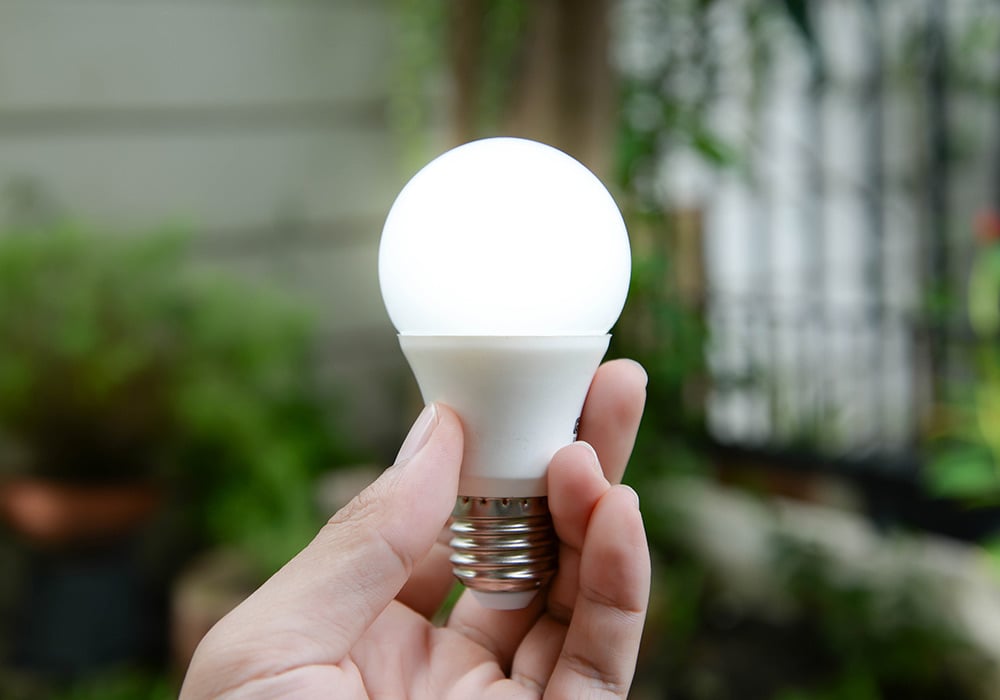
Another aspect to consider is the LED lumens per watt, which indicates the energy efficiency of the light. A higher lumens-per-watt value means the LED is more efficient in converting electricity into light. To give you an idea, an LED bulb with 90 lumens per watt is considered energy-efficient, while incandescent bulbs often have less than 20 lumens per watt.
Now, let’s compare the energy consumption of LED bulbs with other types of lighting in terms of wattage:
- LED: A 10-watt LED bulb might produce an output equivalent to a 60-watt incandescent bulb.
- Incandescent: These traditional bulbs use 60 watts of electricity to produce the same brightness as a 10-watt LED.
- Compact Fluorescent Lamps (CFLs): A CFL with around 13-15 watts can produce a similar brightness to a 60-watt incandescent or 10-watt LED bulb.
As you can see, LED lights are much more energy-efficient compared to incandescent and CFL alternatives. This can result in significant electricity savings.
To calculate the cost of running an LED light, use the following formula:
Energy cost = (Wattage x Hours of use per day x Days of use per year x Electricity rate) / 1000
For example, if you use a 10-watt LED bulb for 5 hours a day, for 365 days a year, and the electricity rate is £0.15 per kWh:
Energy cost = (10 x 5 x 365 x 0.15) / 1000 = £2.73 per year
In conclusion, LED lights consume notably less electricity than their traditional counterparts, saving you money on energy bills and helping the environment. Choosing the right wattage and lumens per watt will ensure the perfect balance between brightness and energy efficiency.
Comparison Between LED and Other Light Sources
When you choose lighting for your home or office, it’s essential to understand the differences between LED and other light sources.
LEDs are energy-efficient, long-lasting, and versatile. They use significantly less electricity than incandescent bulbs and compact fluorescent bulbs (CFLs). LEDs can last up to 50,000 hours, while incandescent bulbs typically burn out after 1,000 hours and CFLs last around 8,000 hours. LEDs don’t contain hazardous materials such as mercury, making them more eco-friendly than CFLs.
Incandescent bulbs are the traditional choice, but their high energy consumption and short lifespan make them less suitable for modern needs. They convert around 90% of the energy they consume into heat, with only about 10% converted into light. This inefficiency translates to higher electricity bills and more frequent bulb replacements.
CFLs were once the go-to choice for energy-saving light bulbs, but they’re being replaced by LEDs due to their mercury content and relatively shorter life. While they are more energy-efficient than incandescent bulbs, they’re not as efficient or environmentally friendly as LEDs.
To have a clearer picture of the differences in electricity usage, here’s a comparison table:
| Light Source | Power Consumption | Lifespan |
|---|---|---|
| LED | 8-22 watts | 25,000-50,000 hours |
| Incandescent | 60-100 watts | 1,000 hours |
| CFL | 13-27 watts | 8,000 hours |
As you can see, LED lights are a better choice when it comes to energy efficiency and longevity. This means lower electricity bills and reduced maintenance as the need to replace bulbs frequently is less than the other light sources.
Factors Influencing Electricity Consumption in LED Lights
When you’re considering the electricity consumption of LED lights, it’s essential to understand that several factors contribute to the energy usage. By recognising these aspects, you can better manage your electricity consumption and reduce energy costs.
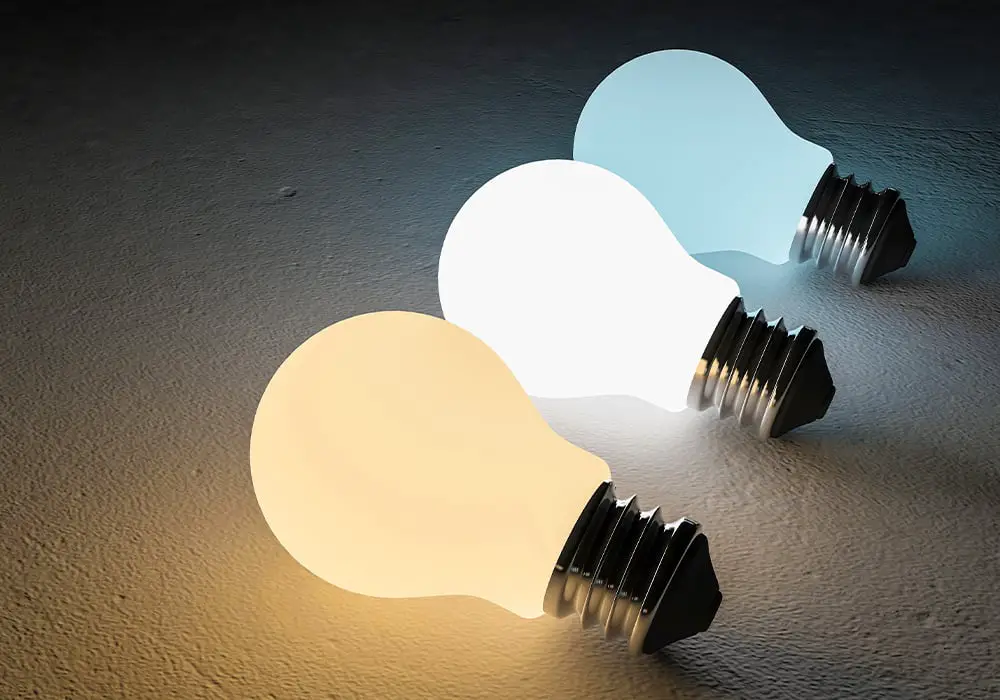
Type of LED Light: Different LED lights have varying energy efficiencies, which significantly affects electricity consumption. For instance, standard LED bulbs consume less electricity than integrated LED fixtures. It’s crucial to select the right LED light for your needs, considering both energy efficiency and intended use.
Wattage: The wattage of an LED light dictates the amount of energy it utilises. Lower wattage bulbs will generally consume less electricity, but may not provide the desired brightness or coverage. Conversely, higher wattage bulbs can deliver more light but at the cost of increased energy consumption. Finding the right balance is vital to maximise efficiency.
Usage Duration: The length of time you use your LED lights will directly impact their overall electricity consumption. Reducing the usage duration can significantly save energy costs. Turning off lights when not needed and implementing lighting controls, such as timers or smart technologies, can help you optimise light usage.
Luminous Efficacy: Luminous efficacy is a measure of how effectively an LED light converts electrical energy into visible light. Higher efficacy means better energy efficiency. LED lights with greater luminous efficacy will yield more light output while consuming less electricity.
Ambient Temperature: The temperature surrounding an LED light can influence its efficiency. In general, an LED light performs optimally at lower temperatures. Extreme temperatures, especially high ones, can cause the LED to become less efficient, ultimately consuming more electricity and reducing its lifespan.
Remember that understanding these factors and making minor adjustments in your lighting choices can help you manage electricity consumption effectively and contribute to a more sustainable and energy-efficient future.
Measuring LED Light Electricity Usage
To measure the electricity usage of your LED lights, you need to consider three crucial factors: the LED’s wattage, the duration of usage, and the cost of electricity.
Wattage: LED lights generally consume less energy than traditional lighting options, such as incandescent or halogen bulbs. You can usually find the wattage of an LED bulb on its packaging or the bulb itself. Keep in mind that LED bulbs with higher wattages tend to produce more light and use more energy.
Duration of usage: To estimate the total electricity usage, you need to determine how long your LED lights are used daily. Multiply the LED’s wattage by the number of hours it’s used each day. This will give you the daily consumption in watt-hours (Wh).
Cost of electricity: Your LED light’s electricity consumption can be converted into pounds (£) by using the cost of electricity in your area. In the UK, the average cost per kilowatt-hour (kWh) is about 14 pence. Divide your daily consumption (Wh) by 1,000 to find the kilowatt-hour (kWh) and multiply it by the cost per kWh to get the daily expense.
For example: A 10-watt LED bulb used for 5 hours a day:
10 watts × 5 hours = 50 watt-hours (Wh) per day.
50 Wh ÷ 1,000 = 0.05 kilowatt-hours (kWh) per day.
0.05 kWh × £0.14 (average cost per kWh) = £0.007 or 0.7 pence per day.
Here is the formula for calculating the cost of running your LED light(s):
Daily cost (£) = (Wattage × Hours of use per day) ÷ 1,000 × Cost per kWh
By following these steps, you can easily measure the electricity usage of your LED lights and understand the associated costs.
How to Reduce Electricity Usage with LED Lights
LED lights are known to consume significantly less energy than traditional incandescent and compact fluorescent (CFL) bulbs. To further reduce your electricity usage with LED lights, follow these tips:
Choose the right LED bulbs: When purchasing LED bulbs, check the lumens (brightness) and watts (energy consumption) listed on the packaging. Opt for energy-efficient bulbs with a higher lumens-to-watts ratio, ensuring that you get the same level of brightness using less energy.
Utilise dimmers: Using a compatible dimmer switch with your LED bulbs can help you save electricity by allowing you to control the brightness of your lighting. By lowering the brightness, you’ll consume less energy.
Make use of timers and motion sensors: Implementing timers or motion sensors can help control when your LED lights turn on and off. This ensures that your lights aren’t using electricity when they’re not needed, reducing energy wastage.
Take advantage of natural light: During the day, make use of sunlight entering your home by opening curtains or blinds. This will minimise the need for artificial lighting and ultimately save you energy.
Switch off lights when not in use: Remember to turn off LED lights in rooms that aren’t being used. By doing so, you’ll reduce unnecessary energy consumption and extend the lifespan of your bulbs.
By following these steps, you can effectively lower your electricity usage with LED lights and enjoy a more energy-efficient home.

